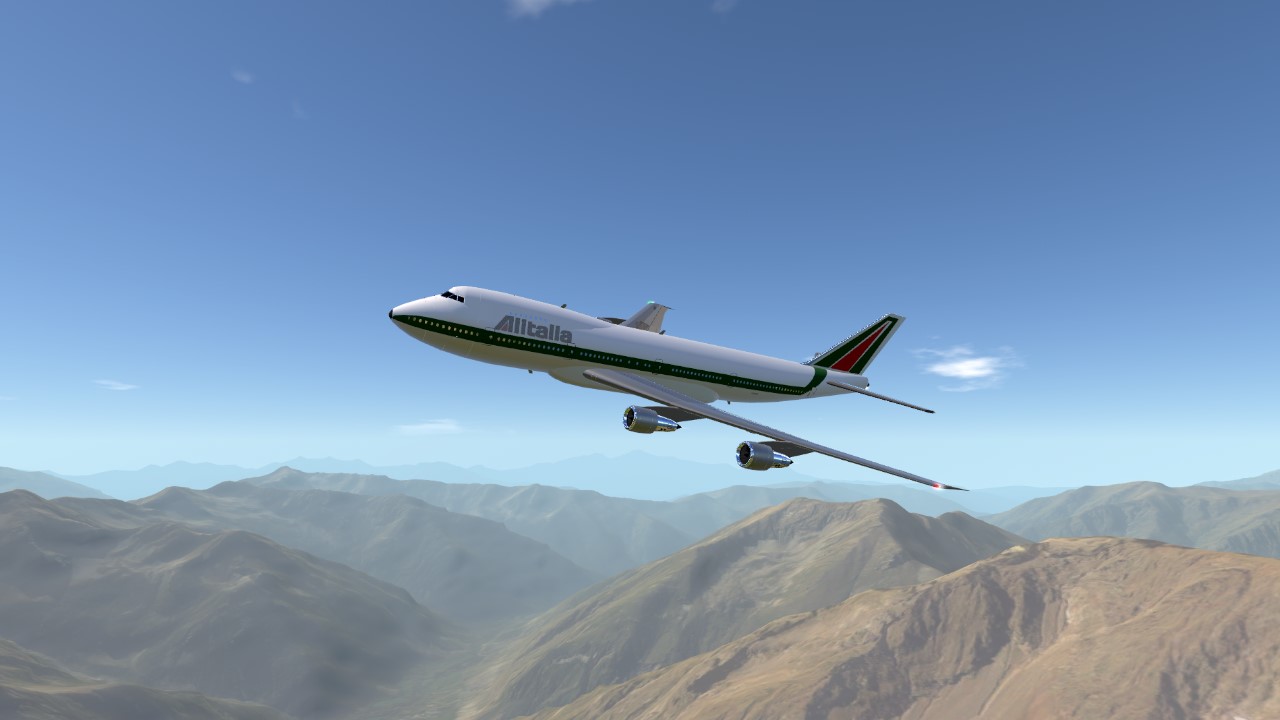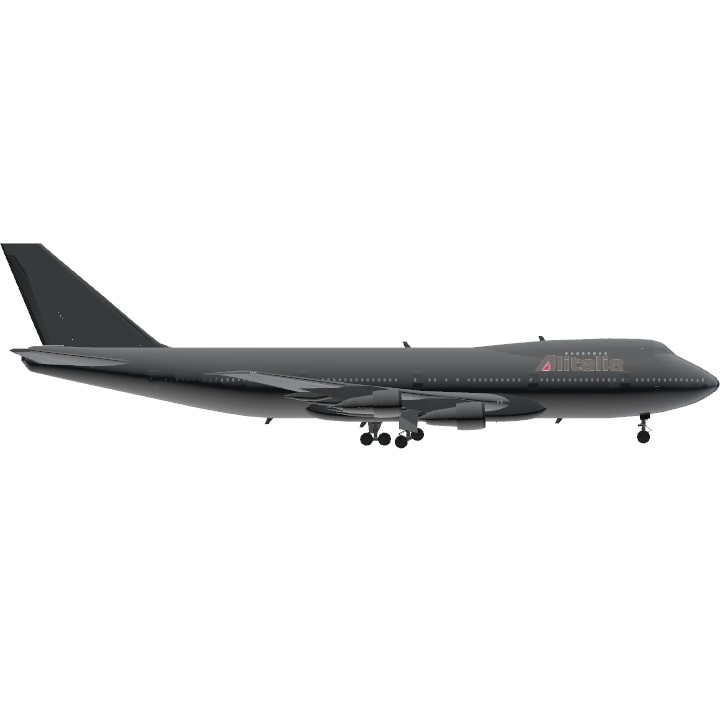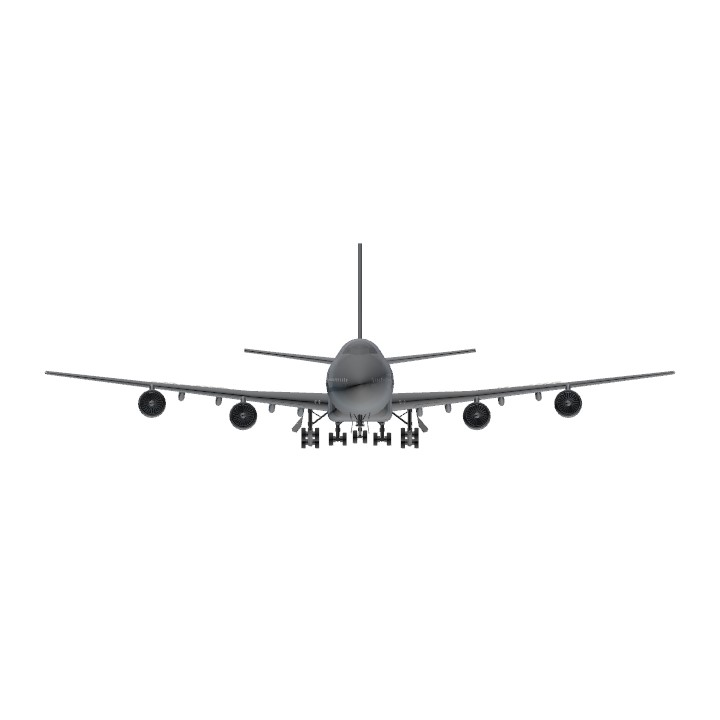Credits | 1918
Request
Requested by BassemT90
Wikipedia
While the 747-100 powered by Pratt & Whitney JT9D-3A engines offered enough payload and range for medium-haul operations, it was marginal for long-haul route sectors. The demand for longer range aircraft with increased payload quickly led to the improved -200, which featured more powerful engines, increased MTOW, and greater range than the -100. A few early -200s retained the three-window configuration of the -100 on the upper deck, but most were built with a ten-window configuration on each side. The 747-200 was produced in passenger (-200B), freighter (-200F), convertible (-200C), and combi (-200M) versions.
The 747-200B was the basic passenger version, with increased fuel capacity and more powerful engines; it entered service in February 1971. In its first three years of production, the -200 was equipped with Pratt & Whitney JT9D-7 engines (initially the only engine available). Range with a full passenger load started at over 5,000 nmi (9,300 km) and increased to 6,000 nmi (11,000 km) with later engines. Most -200Bs had an internally stretched upper deck, allowing for up to 16 passenger seats. The freighter model, the 747-200F, had a hinged nose cargo door and could be fitted with an optional side cargo door, and had a capacity of 105 tons (95.3 tonnes) and an MTOW of up to 833,000 pounds (378 t). It entered service in 1972 with Lufthansa. The convertible version, the 747-200C, could be converted between a passenger and a freighter or used in mixed configurations, and featured removable seats and a nose cargo door. The -200C could also be outfitted with an optional side cargo door on the main deck.
The combi aircraft model, the 747-200M (originally designated 747-200BC), could carry freight in the rear section of the main deck via a side cargo door. A removable partition on the main deck separated the cargo area at the rear from the passengers at the front. The -200M could carry up to 238 passengers in a three-class configuration with cargo carried on the main deck. The model was also known as the 747-200 Combi. As on the -100, a stretched upper deck (SUD) modification was later offered. A total of 10 747-200s operated by KLM were converted. Union de Transports Aériens (UTA) also had two aircraft converted.
After launching the -200 with Pratt & Whitney JT9D-7 engines, on August 1, 1972, Boeing announced that it had reached an agreement with General Electric to certify the 747 with CF6-50 series engines to increase the aircraft's market potential. Rolls-Royce followed 747 engine production with a launch order from British Airways for four aircraft. The option of RB211-524B engines was announced on June 17, 1975. The -200 was the first 747 to provide a choice of powerplant from the three major engine manufacturers. In 1976, its unit cost was US$39M (185.7M today).
A total of 393 of the 747-200 versions had been built when production ended in 1991. Of these, 225 were -200B, 73 were -200F, 13 were -200C, 78 were -200M, and 4 were military. Iran Air retired the last passenger 747-200 in May 2016, 36 years after it was delivered. As of July 2019, five 747-200s remain in service as freighters.
Alitalia
Alitalia - Società Aerea Italiana operating as Alitalia was an Italian airline which was once the flag carrier and largest airline of Italy. The company had its head office in Fiumicino, Metropolitan City of Rome Capital. The airline was owned by the Government of Italy from its founding in 1946 until it was privatized in 2009; after struggling with profitability while a private company, including failed negotiations to sell to other private parties, the Italian government took ownership of the airline in March 2020. The airline operated a fleet of Airbus A319-100, Airbus A320-200, Airbus A321-100, Airbus A330-200, and Boeing 777-200ER aircraft to over 34 scheduled domestic, European and intercontinental destinations. The airline operated from its main hub at Leonardo da Vinci–Fiumicino Airport. The airline was a full member of SkyTeam alliance, and it had codeshare agreements with 42 airlines. In 2018, the airline was the twelfth-largest airline in Europe.
The airline entered extraordinary administration in 2017 following years of unprofitability. On 24 August 2021, Alitalia announced that it would cease operations on 15 October 2021, and that passengers with tickets for later flights could reschedule on an earlier flight or request a refund. On 15 October 2021, in a hybrid reorganization, Alitalia sold its entire operation to ITA Airways, a newly formed state-owned flag carrier.
Real Picture of the I-DEMB



Have fun!
Specifications
Spotlights
- Brololxd 2.6 years ago
General Characteristics
- Predecessor Boeing747-100/200 Generic
- Successors 1 airplane(s)
- Created On Windows
- Wingspan 213.4ft (65.0m)
- Length 231.6ft (70.6m)
- Height 103.3ft (31.5m)
- Empty Weight N/A
- Loaded Weight 182,497lbs (82,779kg)
Performance
- Power/Weight Ratio 0.267
- Wing Loading 42.8lbs/ft2 (209.2kg/m2)
- Wing Area 4,260.1ft2 (395.8m2)
- Drag Points 0
Parts
- Number of Parts 1258
- Control Surfaces 7
- Performance Cost 6,016





@BassemT90
@Iceplane7965 ok
@Anguirus380 Can you make a Qantas Fokker 100?
@BassemT90 Your welcome
@CoachPickles86 woowwwwww thank youuuuuuu